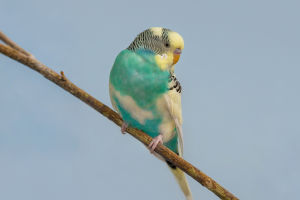Hello Lykkers! Let’s dive into the fascinating world of one of the most social and endearing primates of South America—the squirrel monkey. With its bright eyes, expressive face, and lively behavior, this charming animal is full of surprises.
Get ready to discover how it lives, plays, interacts, and what challenges it faces in the wild. Let’s explore the squirrel monkey’s story, from tree-top life to interspecies friendships, and what makes this tiny creature so unique.
Understanding the Squirrel Monkey
Physical Appearance and Movement
The squirrel monkey, scientifically known as Saimiri sciureus, is a small primate native to Central and South America. It typically weighs around one kilogram and is known for its white face mask, dark muzzle, and vibrant yellow-orange fur, with lighter patches on its belly.
Unlike other New World primates, its tail is not used for gripping. However, it provides excellent balance as this monkey nimbly moves among the trees.
Arboreal Lifestyle
Highly agile and fast, squirrel monkeys spend the majority of their time in the forest canopy. Their movements are quick and precise, and they are excellent jumpers. Life above the ground provides safety from many dangers and better access to food sources.
Group Dynamics
These monkeys are social and live in groups ranging from 15 to 50 individuals, although some observations report gatherings of up to 500. They are known for their calm nature and do not typically engage in conflicts with neighboring groups. Multiple groups may share overlapping areas without confrontation, simply avoiding each other’s space.
Daily Life and Diet
Feeding Habits
Squirrel monkeys enjoy a mixed diet consisting mostly of fruits and berries. They also eat insects and small vertebrates like frogs and lizards. Their nutritional needs are closely tied to the changing seasons.
Offspring are often born between February and April, a period when insects are more abundant, offering essential nutrients for growth and development.
Care of the Young
After a gestation period of five months, a single infant is typically born. The newborn clings to the mother's back for several weeks, gradually gaining independence. Other group members often assist in caring for the young. Weaning usually occurs around the six-month mark. These monkeys have a longer developmental period compared to their total lifespan, which contributes to their strong social ties and group cohesion.
Grooming and Social Bonds
Grooming plays a key role in the social life of squirrel monkeys. They spend long periods cleaning each other’s fur, a practice that helps remove parasites while reinforcing trust and connection among group members. This shared activity helps maintain peace within the group.
Interactions, Challenges, and Conservation
Unusual Friendships
One of the most interesting traits of the squirrel monkey is its ability to peacefully interact with other species, particularly the capuchin monkey.
These two primates are often found foraging and playing together in the same forests, forming unique cross-species friendships that are rare in the animal world.
Predators and Self-Defense
Despite their agility, squirrel monkeys are vulnerable to several predators including large birds, snakes, and wild cats. To stay safe, they rely on vocal signals that function as alerts. These calls help the group detect danger and quickly retreat to the treetops. Their communication system is sophisticated and essential for survival.
Threats to Their Habitat
The most pressing issue facing squirrel monkeys today is habitat loss. Their natural homes—tropical forests in countries like Colombia and Ecuador—are shrinking due to expanding human activities. This loss of forest area makes it harder for them to find food and safe shelter.
Impact of Illegal Capture
Some squirrel monkeys are still captured and sold through unauthorized channels. This not only disrupts their social structure but also causes stress and suffering. Thankfully, efforts are being made to protect them, and while some subspecies face higher risks, the overall population remains relatively stable for now.
Conclusion
Dear Lykkers, the squirrel monkey is not just another adorable face in the animal kingdom—it’s a social, intelligent, and adaptable species that deserves admiration and protection. From its vibrant lifestyle among the trees to its remarkable friendships and survival strategies, this primate teaches us about coexistence, communication, and the importance of preserving the natural world.
As forests continue to vanish, the future of the squirrel monkey may become uncertain. But through awareness, respect, and sustainable choices, everyone can play a part in securing a better future for this delightful tree-dweller. Keep exploring and stay curious!


